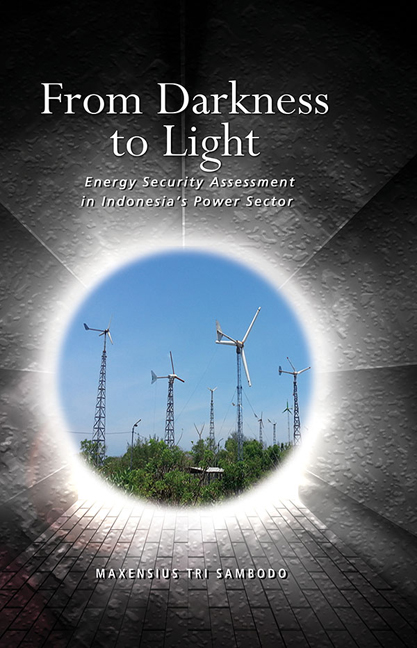Book contents
- Frontmatter
- Dedication
- Contents
- List of Tables
- List of Figures
- List of Abbreviations
- Acknowledgements
- 1 Introduction
- 2 A Historical Overview of the Electricity Sector
- 3 Electricity Production and Consumption: Boom and Bust
- 4 Economic Crisis and Its Impact on the Power Sector
- 5 Electricity and Economic Growth
- 6 Electricity and the Environment
- 7 The Rural Electricity Programme in Indonesia
- 8 Conclusion
- Index
- About the Author
- Frontmatter
- Dedication
- Contents
- List of Tables
- List of Figures
- List of Abbreviations
- Acknowledgements
- 1 Introduction
- 2 A Historical Overview of the Electricity Sector
- 3 Electricity Production and Consumption: Boom and Bust
- 4 Economic Crisis and Its Impact on the Power Sector
- 5 Electricity and Economic Growth
- 6 Electricity and the Environment
- 7 The Rural Electricity Programme in Indonesia
- 8 Conclusion
- Index
- About the Author
Summary
After seventy years of Independence, Indonesia still struggles to solve four main challenges. Firstly, Indonesia has the highest number of people without electricity access in the Asian region, after India (IEA 2013). Secondly, out of the ten Southeast Asian countries, Indonesia has the lowest electrification rate, after Cambodia, Myanmar, and the Philippines (IEA 2013). Thirdly, in terms of electricity consumption per capita, out of 135 countries, Indonesia ranked 28th from the bottom in 2011, after the Philippines and before India. Fourthly, in terms of carbon dioxide emissions from electricity and heat production, Indonesia was one of the top emitters, placed at 16th out of 133 countries in 2011. The emissions will increase if Indonesia becomes more dependent on coal power plants in the future. As the demand for electricity in Indonesia is expected to rise, this has consequences not only in terms of the provision of primary energy supply for power generation, but also in terms of electricity transmission and distribution, intended improvements regarding the quality of electricity supply, the maintenance and sustainability of power supply, the reduction of electricity poverty, and finally, the creation of a green (more environmentally sustainable) power system.
Nowadays, the challenges of the power sector can be quite complex and decision-makers would need to take multidimensional objectives into consideration. These include the economic, environmental, social, and human (safety) factors. Further, there is also the trade-offs for some criteria. For example, from an economic perspective, the power system would need to be developed using the least cost principle and following the structure of current generating cost in Indonesia, coal power plants have the lowest cost. However, from the environmental perspective, this policy is not strongly advisable as the coal-based power plants emit more carbon dioxide compared to gas- or oil-based plants. In addition, the power system planning would need to address issues such as reducing energy poverty, regional disparity, and income inequality in order to meet social objectives. Considering the challenges on the geographical and topography situation, and varieties in the population density, there is a need to combine both on-grid and off-grid connection to electrify the most remote parts of Indonesia.
Information
- Type
- Chapter
- Information
- From Darkness to LightEnergy Security Assessment in Indonesia's Power Sector, pp. 1 - 6Publisher: ISEAS–Yusof Ishak InstitutePrint publication year: 2016
